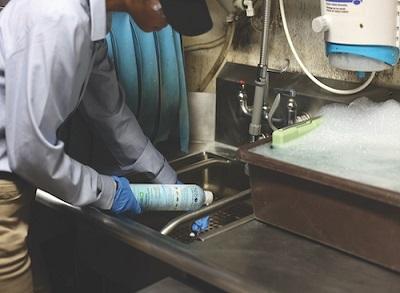
Expert Solutions
The year was 1998. The Tennessee Volunteers were National Champions in football, the world was turning its eyes to the specter of Y2K, and Nibor-D® Insecticide Dust hit the market. A lot has changed over the last 26 years, but the borate-based Nibor-D dust has been relentlessly consistent in its efficacy, reliability, and versatility. As we will see below, this consistency is due to those borates—there has never been any evidence of an insect population developing a resistance to it. Plus, Nibor-D’s broad label makes it an ideal product for commercial and residential accounts, and its track record against notoriously difficult pests (like small flies and American and German cockroaches) makes it’s a go-to solution for even the toughest infestations. When you add in the fact that it can be used as a dust, liquid, or foam, it’s no wonder that it became a staple product found on service vehicles all over the country.
So, how do you build on a classic? Why bother to innovate a product that has performed well for a quarter of a century at all? Because you asked us to, of course! Over the decades, we came to learn from feedback from PMPs in the field on how they prefer to tackle tough infestations. It became clear how useful foaming with Nibor-D was for getting into the hard-to-reach areas where pests all too often live and breed, delivering borates to those out-of-the-way places where they would be most effective. One of the main drawbacks to foaming, however, has always been time. Whether it’s the time it takes to mix the solution to the appropriate strength and with the right consistency, or even just nixing the hassle of dragging foaming equipment with you, creating your own foam takes up valuable time.
That’s where Nibor-D Insecticide Foam + IGR comes in. Nibor-D + IGR combines the power of borates with the benefits of foam as a delivery system, further enhancing the blend with the addition of an insect growth regulator (IGR). The result is a potent, dual active blend that has multiple modes of action to rapidly control infestations, all mixed up and ready to go in a convenient can.
Such results are possible due to the different ways Nibor-D + IGR gets to the root of the infestation. It works first to kill by direct contact. The high expansion foam leaves residual deposits of both active ingredients on surfaces, filling up voids or drains for 360º contact. This process helps to eliminate adults and to prevent larval development by rendering organic material, scum, filth and biofilm uninhabitable. Meanwhile, the IGR goes to work immediately to reduce the chances of a second generation of pests, helping to disrupt reproductive processes and resulting in the inhibition of the molting process, reduced egg production and hatch rates.
The Unseen Obstacles: Dealing with Unexpected Structural Challenges
“The reason Nibor-D + IGR is so effective is because borates are so effective,” said Dr. Jamel Sandidge, National Director, Technical Services for Nisus Corporation. “They create versatile, long-lasting pesticides that can take effect rapidly and can remain effective over long periods of time.” This efficacy is due to how insects react to borates. Boron, the critical component of borates, is naturally occurring and consumed by living creatures on a daily basis in food. Any excess is processed by kidneys in mammals and excreted as urine. Insects, however, lack kidneys, which allows borates to build up in their system, ultimately prohibiting them from turning their food into energy. Because borates affect enzyme cofactors rather than proteins, they do not trigger the processes by which physical resistance develops. Essentially, borates throw a wrench in an insect’s metabolic gears, tearing up its guts, prohibiting its ability to get energy from food, and causing neuromuscular fatigue. To date, there is no known example of pest populations developing tolerance or resistance to borates over time. “This stuff just works,” concluded Dr. Sandidge.

